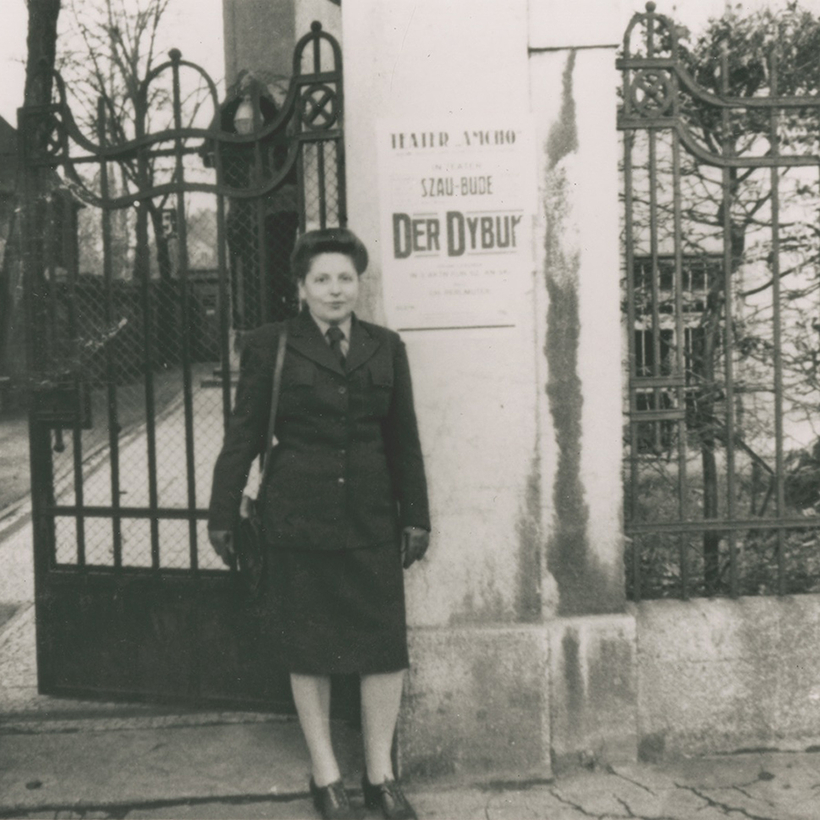Intellectuals tend to have a briefer moment in the sun than novelists or poets; they are taking part in the arguments of the day rather than creating monuments for the ages. But for some reason, the reputation of the New York Intellectuals—a group of brilliant essayists, critics, and social observers who flourished in the mid-20th century—still endures, even as the last surviving members of the group enter their 90s.
Perhaps few people still actually read the literary essays of Lionel Trilling, the aesthetic theories of Clement Greenberg, the cultural criticism of Dwight Macdonald or the polemics of the dueling Irvings, Howe and Kristol, paladins of the left and right, respectively. But collectively, they stand for an ideal that still matters: the freelance thinker, unconstrained by academic dogmas, who has something insightful to say about any subject, whether it’s a presidential election or the late style of Henry James.
Lucy S. Dawidowicz, who died in 1990 at the age of 75, seldom makes lists of the leading New York Intellectuals, even though she fits the type perfectly.
From Radical to Cold Warrior
A child of Jewish immigrants who grew up poor in the Bronx during the Great Depression, Dawidowicz went to one of New York City’s free public colleges and became a radical, even joining the Young Communist League.
Communism was an important phase for all the New York Intellectuals, training them to think in big-picture terms about politics and ideas, as well as to argue with agility and passion. (A classic documentary about the group, by Joseph Dorman, is titled Arguing the World.) But what mattered most was the way all of them turned against the Party, realizing that the life of the mind was incompatible with Stalinist dogma. Some remained on the left, like Irving Howe and Alfred Kazin, but called themselves democratic socialists; others went all the way to the right, like Irving Kristol and Norman Podhoretz, who founded a new political movement, neoconservatism.
Dawidowicz was in the vanguard of this rightward march. She left Communism behind before she graduated from Hunter College, and as the years passed she became increasingly skeptical of liberalism, too. By the 1980s she had become an ardent Cold Warrior and Reaganite, views that informed her essays for magazines like Commentary, as well as her sociological studies for the American Jewish Committee, where she worked as a researcher for many years.
In her 60s, she achieved wider fame thanks to The War Against the Jews (1975), a highly influential history of the Holocaust, whose thesis is reflected in its title. Dawidowicz believed that the annihilation of the Jews was Hitler’s chief goal and the driving purpose of Nazism from beginning to end. This “intentionalist” thesis was directed against the “functionalist” argument embraced by most academic historians, then and now, which sees the Holocaust as a product of wartime contingencies and the internal dynamics of Nazi rule, rather than a master plan.
Dawidowicz fits the New York Intellectual type perfectly.
So why isn’t Dawidowicz as celebrated as the other New York intellectuals? That’s one of the questions Nancy Sinkoff tries to answer in her biography, From Left to Right: Lucy S. Dawidowicz, the New York Intellectuals and the Politics of Jewish History. Gender is one reason, of course. Only a few women were admitted to the male coterie around Partisan Review and Commentary, and Sinkoff argues that the role of what she calls “sexual capital” can’t be ignored. Hannah Arendt had it, and so did Mary McCarthy and Susan Sontag, but not Dawidowicz.
But the more profound reason why Dawidowicz remained on her own, a school of one, had to do with her unfashionable interest in Jewishness. Most of the New York intellectuals were Jewish, but they shared an intellectual disdain for religion, as well as a discomfort with their own working-class, immigrant origins. If they grew up speaking Yiddish, most of them forgot it as quickly as possible. Their lodestars were Marxism and modernism—movements that appealed because they were universalist, welcoming thinkers of all backgrounds equally.
Dawidowicz, by contrast, embraced both the Yiddish language and yiddishkayt, the culture and spirit of Jewish Eastern Europe. The turning point in her life came in 1938, when she went to do graduate study in Vilna, then part of Poland, and was nearly caught there by the outbreak of World War II. She managed to escape only thanks to her American passport, but most of her friends and colleagues were murdered. The man she married, in 1948, was a survivor whose first wife and child had been killed by the Nazis. As a result, the Holocaust was a much more immediate reality to Dawidowicz than it was to most of the New York intellectuals, who took decades to come to terms with its scale and meaning.
The key to understanding Dawidowicz, Sinkoff persuasively argues, is that because of these experiences, she thought of herself as a Jew who happened to live in America, rather than an American whose ancestors happened to be Jewish. Half a century ago, this made her unclubbable among the New York intellectuals. Today, in a world less enamored of universalism, it might make her sound more like a prophet.
Adam Kirsch is a poet, critic, and editor based in New York whose books include Rocket and Lightship: Essays on Literature and Ideas
